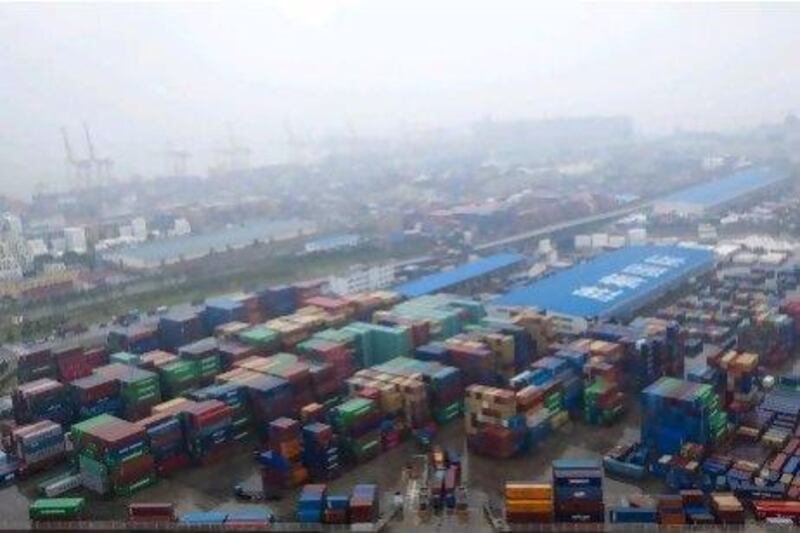DALIAN // Ganbat Chuluunkhuu, a young banker from Mongolia, is on a reconnaissance mission from his landlocked homeland to China's Yellow Sea coast.
"This is impressive," he says, as the ferry carrying him rounds a tanker unloading crude oil and enters the container terminal behind a sea wall at Dalian.
Dozens of blue and yellow gantry cranes tower over the quayside; trucks towing containers trundle along multicoloured metal corridors and railway tracks snake off through forested hills to the industrial and agricultural hinterland of north-east China.
Dalian is about 700km from the Mongolian border and is one candidate in Mr Chuluunkhuu's search for a coastal export route for millions of tonnes of coal and iron ore expected to flow out of his country within five years.
Mongolian interest is just one example of the growing demands on Dalian port, which sits strategically on a tongue of land guarding the Bohai Straits, equidistant from Beijing to the west and the Korean peninsula to the east.
Australian liquefied natural gas is sucked into pipelines at one end of the sprawling complex, while Chinese corn pours on to bulk carriers from its 800,000-tonne grain silos next door. In another bay on the rocky peninsula, reddish-brown iron ore lies in symmetrical mounds awaiting a train journey to a steel mill 200km inland. Beyond the container port, a seagoing leviathan designed to carry 8,000 cars casts a shadow across a matrix of thousands of identical, brightly coloured passenger cars parked nearby.
Dalian is one of a dozen ports that have helped China realise its export-driven economic miracle.
Dalian port, attached to a city of 6.6 million people, was occupied by Russia and Japan for much of the first half of the 20th century precisely because of its strategic location. It returned to Chinese sovereignty in 1955 but had to wait three decades for trade to take off. The government moved the port from a downtown location to a few kilometres outside the city in 1996 and trade has climbed at an average 15 per cent every year ever since. It is now the sixth-largest port in China, handling 250 million tonnes of goods a year, compared with 150 million tonnes at Dubai's Jebel Ali, the largest port in the Middle East.
While commodities are an important part of the business, it is the container section that has had the fastest growth. Since the new terminal opened, the number of 20ft containers carrying anything from seafood to hairdryers has grown by 20 to 25 per cent a year and now stands at 5.5 million annually.
"From our analysis, we are sure this growth will continue for the next three years," says Zhang Fengqiang, the public relations manager of the port, apparently unfazed by reports of a global economic slowdown.
The outlook is not just benefiting from China's growth, which motors ahead at 10.5 per cent annually, but the emerging industries within Dalian's extended sphere of influence that are seeking a voice on the stage of world trade. The port has already prepared a huge tract of waterfront opposite the existing container terminal, where new cranes can be installed as soon as the expected demand materialises, Mr Fengqiang says.
Joint ventures have been one ingredient of Dalian's success, creating partnerships with the Port of Singapore; Maersk, the world's largest shipping line; and China Shipping in various phases of its development. Access to capital markets and a huge free zone covering the whole port footprint are others. Dalian has attracted foreign investors including Intel, the microchip maker, Subaru, the Japanese car maker, and Itochu, a Japanese trading giant.
Cherry, the Chinese car manufacturer, is building a 12 billion yuan (Dh6.89bn) integrated plant on the waterfront that will produce 300,000 cars annually when it is complete in five years.
So, will Dalian also be the port of choice for Mongolia? Mr Chuluunkhuu, who left a banking career in New York to set up an advisory practice called Liberty Partners back home in Ulaanbaatar, is not saying.
"They seem receptive," he says. "We still have to see several ports in China and several ports in Russia," he adds, before heading off to his next stop: Dandong, on the border with North Korea.






